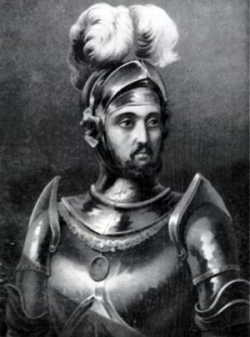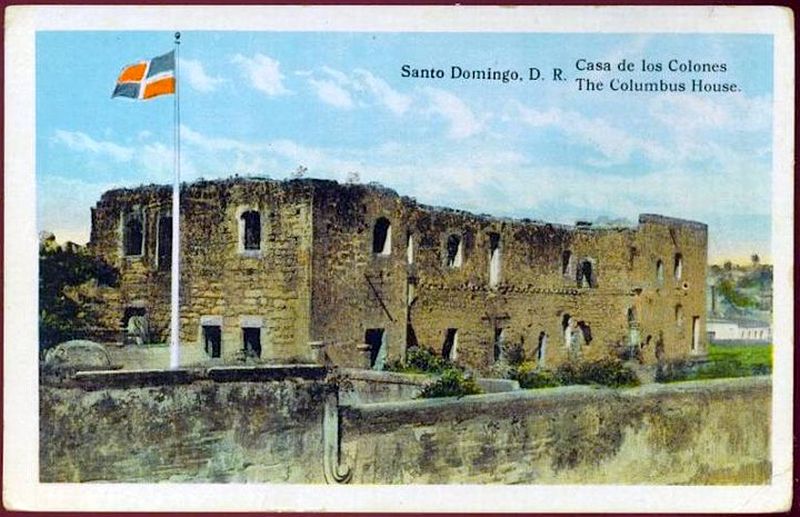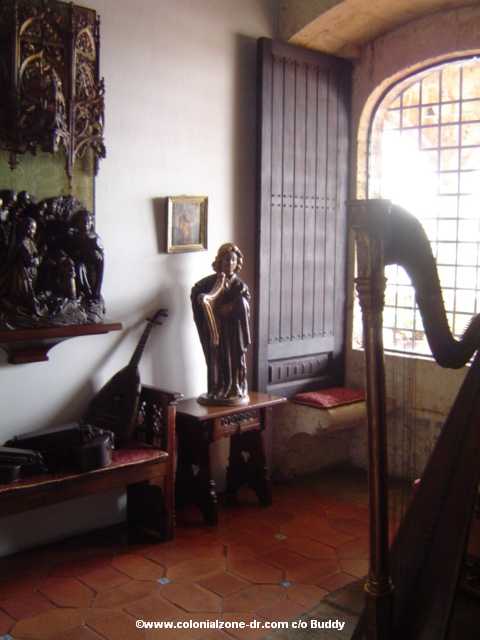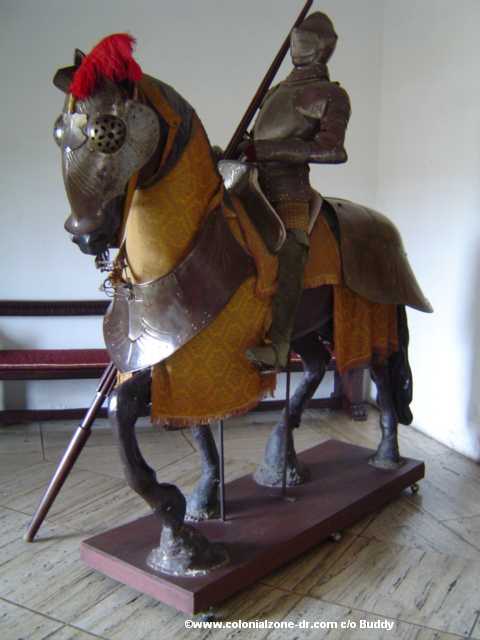Plaza María de Toledo
The Plaza María de Toledo is a nice tranquil spot to sit and relax. The Plaza honors the first American Viceroy / Virreina, Doña María de Toledo. A cultural woman who helped make life for the new colony of Santo Domingo a little more proper.
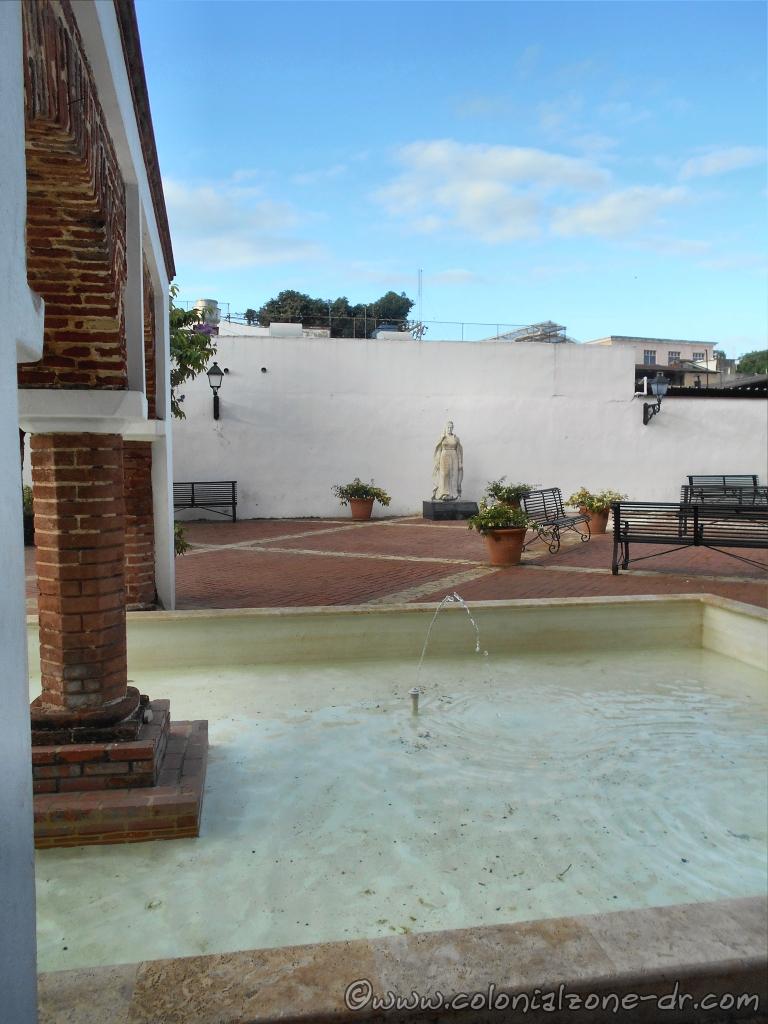
The Plaza | Location | María de Toledo History
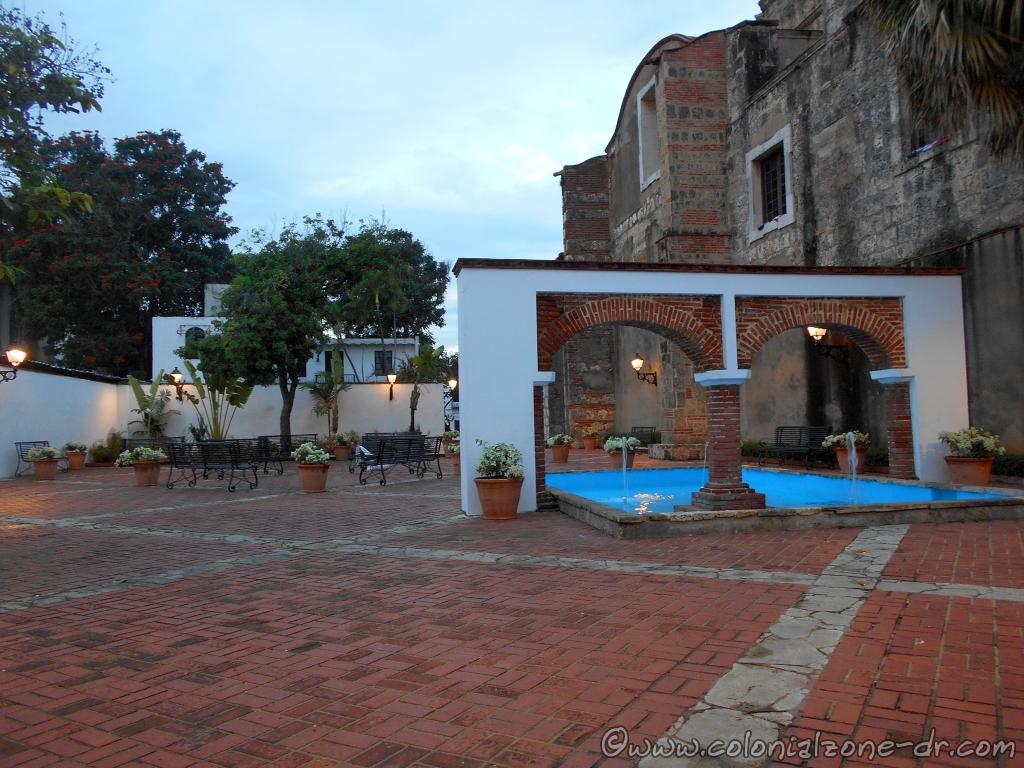
The Plaza
The brick tiled plaza sits between Calle Las Damas and Isabel la Católica. Benches line the courtyard, making it an ideal place for sitting and relaxing. The newly repaired fountain cascades water into a small reflecting pool. The sculpture of María de Toledo sits in the square in front of the fountain. Originally the statue was located on the side lawn of the Alcazar de Colón in Plaza Espana. They moved the statue to Plaza Maria de Toledo when the plaza was renovated in 2017.
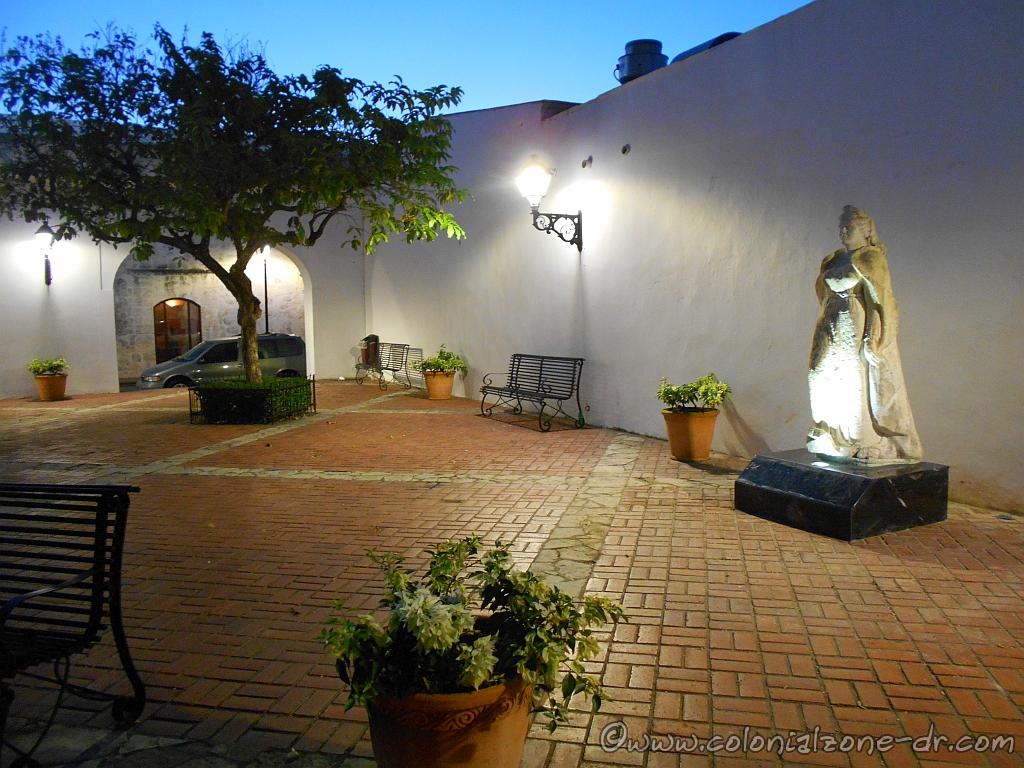
There were 2 homes on the original piece of land. All that remains are the 3 stone arches at the entrance along Las Damas and the 2 arches above the pool. It was originally the residence of the group la Compañía de Jesús until they were expelled from the country.
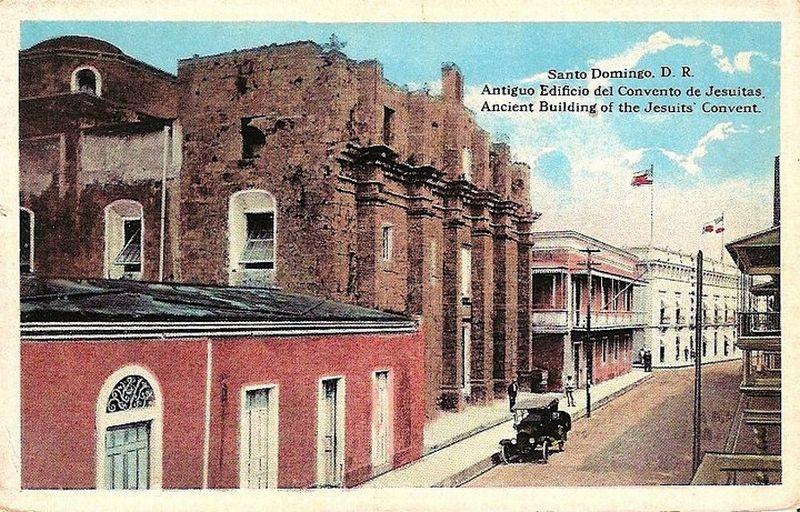
Every Sunday there is a small Antique Market held in the plaza. Vendors sell their wares including antiques, Taino artifacts, brass pieces, jewelry and other interesting trinkets.

Location
Walking up (north) Isabel la Católica from the eastern side of the Conde about 1 block. It is the first open space on the right across from Calle Gregorio Luperon. Walking up Calle las Damas from the Conde, it is the first plaza on the left in front of Governor Nicolás Ovando’s Residence, now a hotel. It is next to the Panteón Nacional.

María de Toledo (born 1490 in Spain – Died May 11, 1549 (aged 58–59) in Santo Domingo
María de Toledo was the wife of the son of Christopher Columbus / Cristóbal Colón, Diego de Colón, II Admiral and II Viceroy of the Indies / II Almirante y II Virrey de Indias. She was the granddaughter of García Álvarez de Toledo, 1st Duke of Alba and the niece of King Ferdinand of Spain.
María was the first person of noble race to arrive on the Spanish island in 1509. She brought class to the colony. Clothes and other fancy items were forbidden in the colony until she arrived. She got special permission from the crown for herself and others to use and wear these items, becoming the central person of the aristocratic society. She also held the title of Viceroy / Virreina and was more powerful and influential than her husband Díego Colon.
María de Toledo was a strong defender of the original inhabitants of the island, the Taino Indians, against the mistreatment of the Spanish. She also fought for the rights of her children after the death of her husband. She was one of the most important female figures in the original colony of 16th century Hispaniola.
The unmarked statue of María de Toldeo used to be on the grassy slope on the side of the Alcázar de Colón. The Columbus Palace was built to be the home of Maria de Toledo and her husband Diego de Colón. She loved being a hostess, receiving guests and entertaining in her royal home.

NOTE – I have researched and found varying histories. Some report that María had 7 children and some say 8 children. I cannot find the cause of death or where she was buried when she died in Santo Domingo. If I find this information, I will add it.
More about the history of the Jesuits in Dominican Republic.
More about the history of María de Toledo

